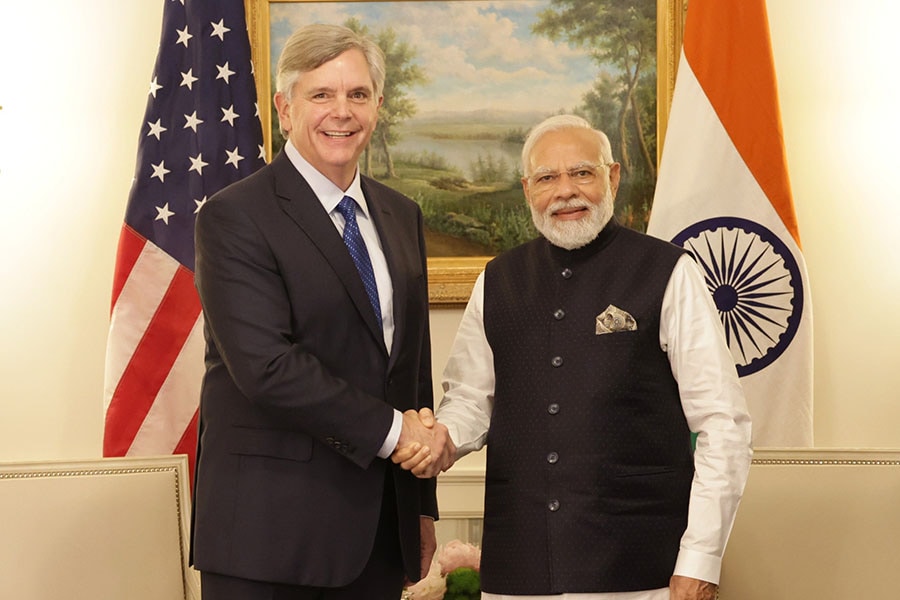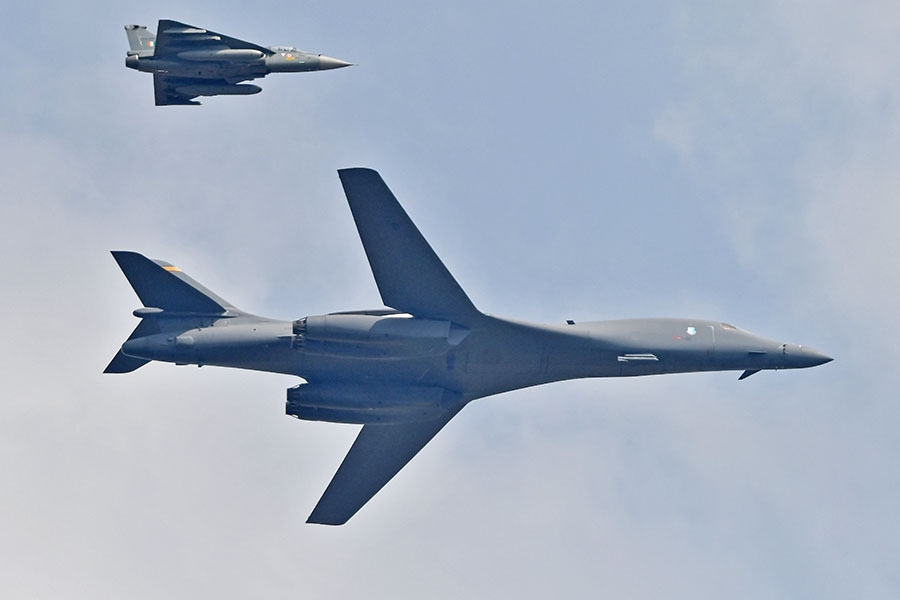
Why GE's deal with HAL is a game changer for Indian defence
The Boston-headquartered company has signed an MoU with Hindustan Aeronautics Limited to produce jet engines for the indigenously developed Light Combat Aircraft, Tejas Mk2. Analysts say this could pave the way for the induction of US fighter jets in the future
 Prime Minister Narendra Modi meets General Electric CEO H. Lawrence Culp Jr, in Washington, USA, Wednesday
Prime Minister Narendra Modi meets General Electric CEO H. Lawrence Culp Jr, in Washington, USA, Wednesday
For the first time ever, India and the US have agreed to jointly manufacture an engine for India’s homegrown fighter aircraft programme, in India.
The Boston-headquartered General Electric (GE) announced on Thursday that it has signed a Memorandum of Understanding (MoU) with Hindustan Aeronautics Limited (HAL) to produce jet engines for the indigenously developed Light combat aircraft (LCA), Tejas Mk2, that are being built by HAL, with the potential to jointly produce GE Aerospace’s F414 engines in India.
The much-anticipated announcement was made during Prime Minister Narendra Modi’s state visit to the US and is seen as a significant milestone in strengthening the defence cooperation between the two countries.
“This is a historic agreement made possible by our longstanding partnership with India and HAL,” Lawrence Culp, Jr, chairman and CEO of GE, and CEO of GE Aerospace, said. “We are proud to play a role in advancing President Joe Biden and Prime Minister Modi’s vision of closer coordination between the two nations. Our F414 engines are unmatched and will offer important economic and national security benefits for both countries as we help our customers produce the highest quality engines to meet the needs of their military fleet.”
GE had begun working with the Aeronautical Development Agency and HAL as part of the LCA project in 1986. The company’s F404 engines have been used to power the Tejas Mk1A aircraft currently in use by the Indian Air Force. In all, 75 F404 engines have been delivered and another 99 are on order for the Tejas Mk1A. Eight F414 engines have been delivered as part of an ongoing development programme for LCA Mk2. To date, more than 1,600 F414 engines have been delivered globally.









